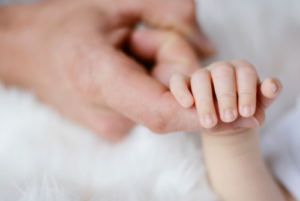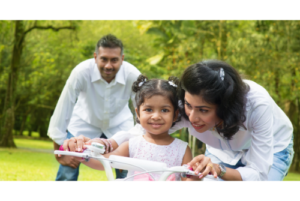Wouldn’t it be wonderful if our children could experience full joy while eating an ice-cream or while doing an activity they love, instead of burning out, asking for more or feeling bored?
In this time of information overload and instant gratification children end up losing touch with their own mind and body. Multitasking and the expectation to take in more and more information automatically trains their neural energy and attention to shift all the time. This in turn affects their ability to pay attention to what they are doing or even completely and openly experience what they are feeling.
How Would Walking Meditation Help Your Child?
Walking meditation helps children feel grounded. It connects them to the present by connecting them to earth that is always present and supportive under their feet. It also regulates their energy and helps improve their ability to pay attention in the present. Along with this, it helps children to calm themselves and also manage distractions and restlessness. A new friendship with joy and relaxation develops.
Walking meditation can be a good way to introduce the concept of mindfulness to children.
What is Walking Meditation?
It is a practice of walking slower than usual and breaking the automatic habit of walking without paying much attention. Walking involves different movements like lifting, swinging, placing foot on the ground and shifting weight to lift the other leg. The practice is to completely try and focus on each aspect of walking. It can be practiced anytime and anywhere.

Having more sensations to focus on due to body movement makes it an easier practice than sitting meditation.
How to do Walking Meditation with your Child?
A good way is for you to start doing the practice with your child. That way you stay in touch with the feelings and sensations your child is feeling.
Below are the instructions that you can use to practice Walking Meditation along with your child-

- Keep your eyes open while doing the practice. Keep your gaze on the ground in front of you.
- If at any time you get distracted and your attention moves away, very gently bring it back to the practice.
- Stand with both the feet flat on the ground. Concentrate on your legs and see if you are able to balance your body properly.If weight is more on one of the legs adjust it until you feel stable.
- Now pay full attention to how the ground feels under your feet. Does it feel warm, cold, rough , smooth? Observe this feeling for 30 seconds. (Children can notice and keep their experience to themselves. If the child is feeling restless you can ask the child to verbally report the feeling e.g using one word he or she can report, cool, hard, warm, smooth etc.)
- Begin by slowly lifting one leg off the ground. Notice how the leg feels as it is being lifted off the ground.
- Now gently swing your leg ahead and place your heel or toe on the ground. Notice the entire action of swinging and placing your foot on the ground.
- While paying full attention to the to the foot on the ground, shift your weight to the front foot and lift the foot that is behind. Notice the shifting of the weight and the movement.
- Now the same process begins with the other foot.
- Remember the idea is not to do it in any particular way, the idea is to notice the entire experience by noticing each small movement.
- Start with practicing for 5 minutes and increase the practice time as per comfort.
About the author
Shubhra B. Sarvaiya
Shubhra is a psychologist and mindfulness practitioner. At Mindful Spring, she works with mindfulness for children.

Want To Introduce the Practice of Mindfulness In your Child's Life?
share this blog!
Behavior Problems in Children – A Sign of Hidden Low Self Esteem?
When you notice that your child is short tempered, stubborn,...
Read MoreDisciplining Children with Compassion
Do you have a young child, maybe below 7 years...
Read MoreCONSISTENCY IN PARENTING : AN ASPECT OF BEHAVIOR MODIFICATION
Most parents seek guidance on how they can change the...
Read MoreTelling It Right- Tips For Communication With Children
Imagine a scenario, where you are an athlete, a runner...
Read More




